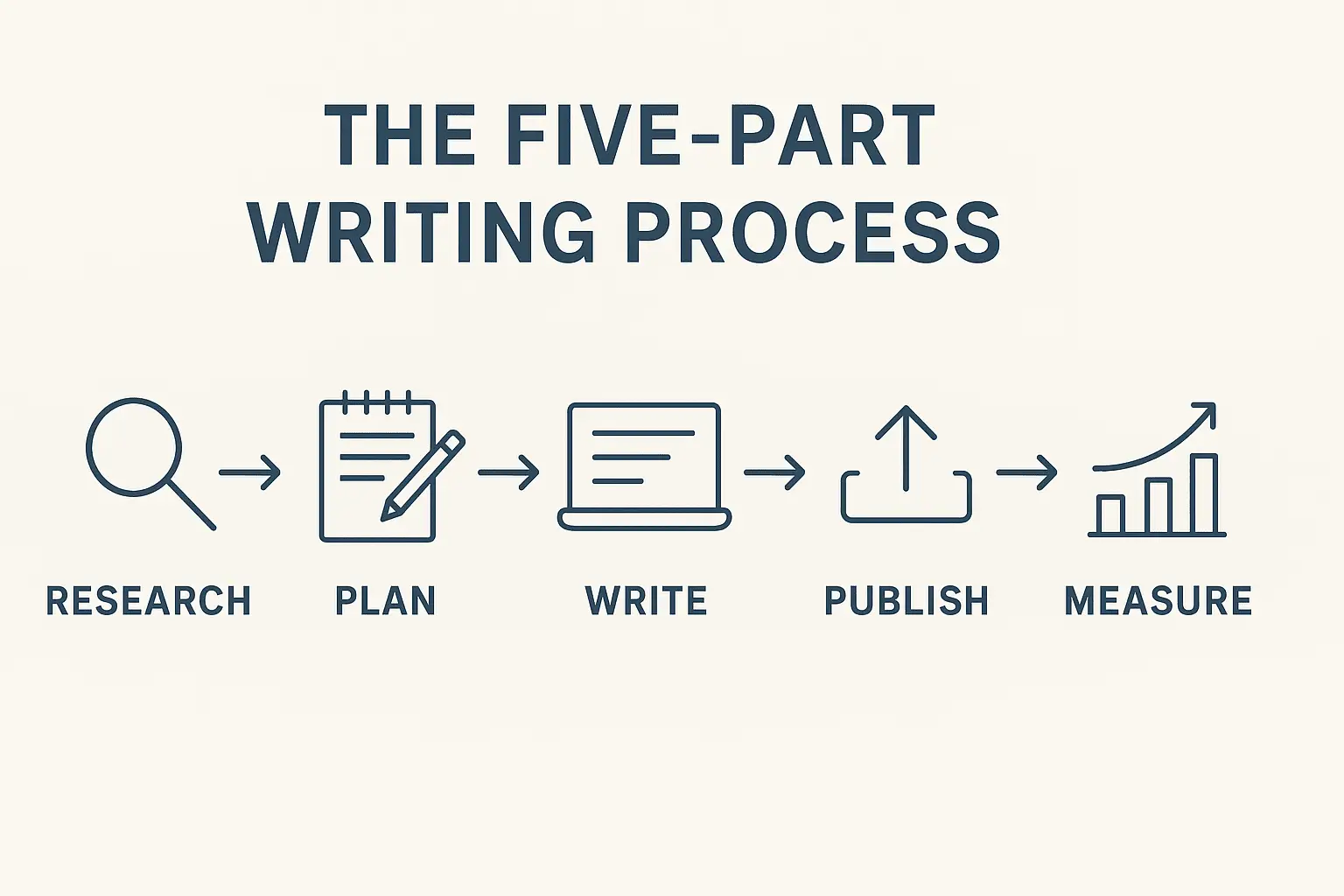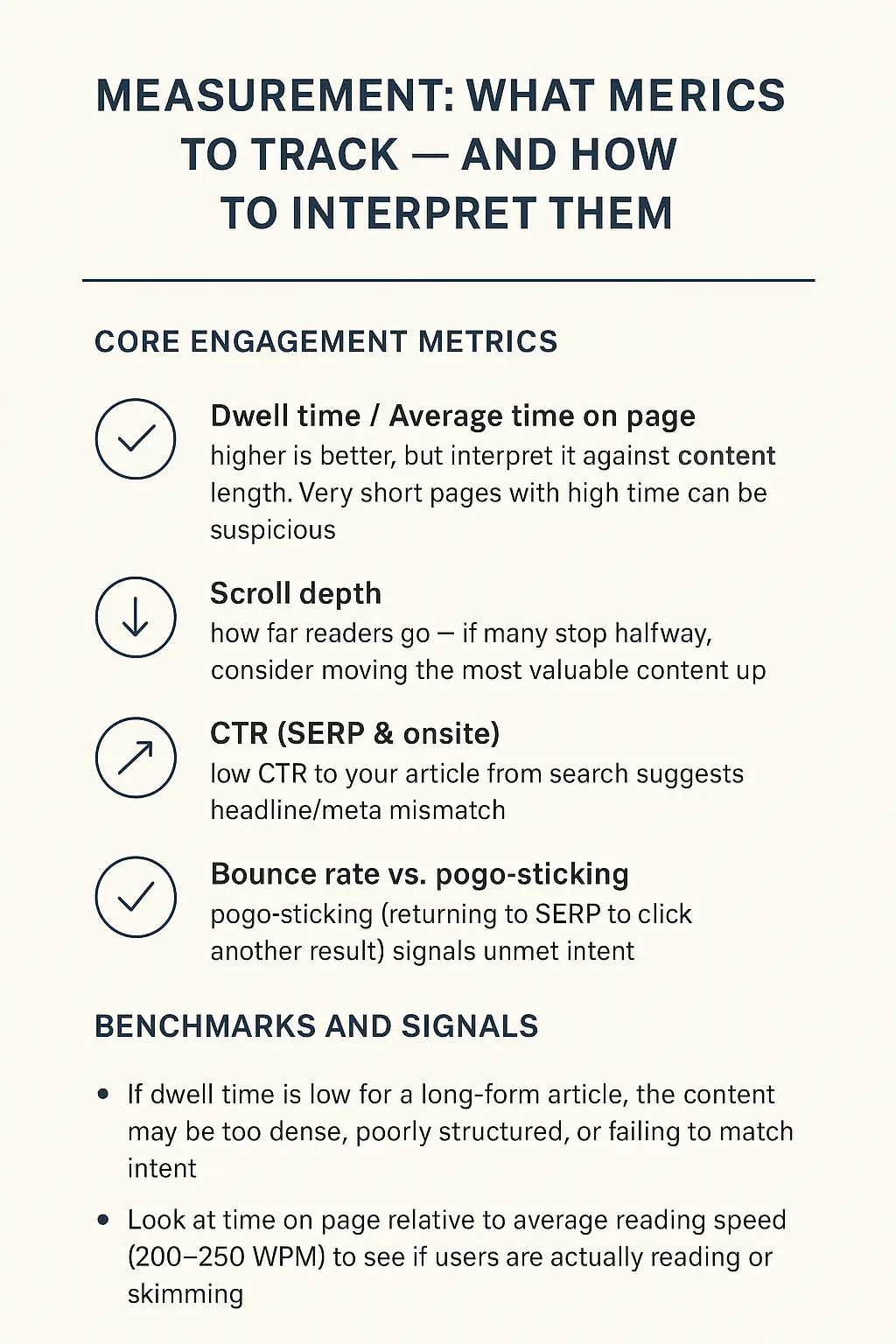Explore content writing tips and techniques to improve clarity, increase dwell time, and boost reader engagement. Practical steps to help your content connect and convert.
Introduction — Why quality and engagement matter now
Great content used to mean “well-written.” Today, it means well-written and meaningful — content that captures attention, answers user needs, and keeps readers on the page long enough to act. With users swiping faster and choices multiplying, attention is the new currency for creators. Recent research suggests the modern online attention span is short (often reported around ~8 seconds), which means your opening seconds — headline, hero image, first paragraph — must work harder than ever to hook readers.
At the same time, search engines and platforms prioritize “people-first” content: pages created to help users, not merely to manipulate rankings. Google’s guidance on creating helpful, people-first content makes this explicit — prioritize the reader, demonstrate experience and trust, and design content that solves real needs.
This guide shows how to craft content that balances clarity, persuasion, and the metrics that matter: dwell time, shares, and conversions. You’ll get a repeatable process, creative techniques, editing checklists, tools, case ideas, and recommended image placements for a visually engaging page.
1. Start with the reader — not the keyword
Before typing a word, answer: who is the reader and what problem are they trying to solve right now? Are they looking for a quick how-to, a step-by-step tutorial, or proof that a solution works? Match your tone and depth to their intent.
- Beginner: simple language, clear steps, definitions.
- Practitioner: examples, data, short-cuts, templates.
- Decision-maker: business impact, case studies, ROI.
- Use this persona to shape your headline, intro, and the examples you include.
2. Nail the headline and opening hook (first 8 seconds)
Your headline is often the only chance to get a click. The intro is the only chance to keep the reader. With attention measured in seconds, your opening should either promise a solution, deliver an unexpected stat, or tell a compelling micro-story. Most readers leave within seconds — but a single narrative pivot in the first 30 words can double the time they stay.
- Formula examples:
- How to [desired outcome] in X steps
- Why [common belief] is wrong — and what to do instead
- [Number] proven ways to [solve problem]
- How to [desired outcome] in X steps
- Hook types you can rotate: stat, provocative question, micro-story, surprising comparison, common mistake.
3. Structure for content scannable, skimmability and flow
Web readers scan. Structure your content so scanning,that leads naturally to reading.There’s difference between tension between skimmability and depth. The way to satisfy both is layered content: give scanners the answer in short form, and offer depth below the fold for readers who stay. This layered approach also increases dwell time because readers who land for a quick answer often stay for the example or case study they find below.
Recommended on-page hierarchy
- H1: Clear promise (same theme as title tag).
- H2s: Major steps or sections (problem, process, examples, tools, mistakes).
- H3s: Sub-steps, checklists, micro-tips.
- Intro paragraph: 1–3 lines max.
- Lead sentence for each H2: 1-sentence summary so scanners can understand the section from the header alone.
Formatting rules
- Short paragraphs (1–3 sentences).
- Bulleted lists for steps and benefits.
- Bold the key takeaway sentence in longer sections.
- Use ample white space, images, and captioned screenshots.
4. The five-part writing process (research → publish → measure)

Think of content writing as a mini-project. Use this five-part flow to maintain quality and improve engagement over time.
Research & idea validation
- Validate interest with keyword/intent checks and social listening (use tools like Keywordly.ai , BuzzSumo).
- Check competitor content length, H2 structure, and social traction for similar topics.
Outline and angle selection
- Decide your unique angle (counterintuitive approach, deeper data, niche audience application).
- Outline H2/H3s first — this reduces writer’s block and supports structured flow.
Drafting for the reader
- Write fast, then edit. Use the “write-as-you-speak” rule to keep tone conversational.
- Add short real examples or micro-case studies to make points tangible.
Revision & optimization
- Edit ruthlessly for clarity, remove fluff, and check readability.
- Optimize accessibility (alt text for images, descriptive link text).
- Add internal links to relevant content on your site.
Publish and iterate
- Publish with schema (Article / HowTo where applicable).
- Measure: dwell time, scroll depth, social shares, comments, and conversions. Use this data to refresh and improve content.
5. Use storytelling and micro-examples to increase emotional engagement
Data informs. Story sells.
- Start sections with a 1–2 sentence micro-story (a user, a problem, and an action).
- Use named characters when possible (“Sam needed to reduce churn…”).
- Translate abstract advice into concrete mini case studies or user quotes.
Storytelling helps readers empathize and imagine applying the advice—this increases the chance of sharing and conversion.
6. Visuals and multimedia — how to use them strategically
Visuals aren’t decoration; they are engagement levers.
Type of visuals that move the needle
- Infographics that summarize instructions.
- Screenshots with annotated changes (before/after).
- Short embedded videos (2–3 minutes) showing step-by-step use of a tool.
Research shows enriched visual content increases on-page engagement and time-on-page, especially when visuals compress complex ideas into digestible formats.
7. Writing techniques that directly improve engagement and dwell time
“Front-load” the payoff
Tell readers quickly why they should keep reading. If the value is clear in the first 30–60 words, they are likely to stay.
Use tension and resolution
Introduce a tension (problem) early and promise a resolution. Then deliver the resolution with examples and actionable takeaways.
Chunk content with micro-headlines
Readers skim; micro-headlines (one-line summaries) let them instantly find the part that answers their need.
Sprinkle interactive elements
Quizzes, polls, and calculators are powerful engagement drivers. Even a simple inline quiz (“Is your heading strong?”) invites clicks and increases time on page.
Optimize the first contentful paint
Slow-loading pages hurt engagement. Compress visuals, use lazy-loading, and ensure your hero image loads fast.
8. Measurement: what metrics to track — and how to interpret them

Metrics matter — but interpretation matters more.
Core engagement metrics
- Dwell time / Average time on page: higher is better, but interpret it against content length. Very short pages with high time can be suspicious. Shopify+1
- Scroll depth: how far readers go — if many stop halfway, consider moving the most valuable content up.
- CTR (SERP & onsite): low CTR to your article from search suggests headline/meta mismatch.
- Bounce rate vs. pogo-sticking: pogo-sticking (returning to SERP to click another result) signals unmet intent.
- Social shares & comments: qualitative indicators of resonance.
Benchmarks and signals
- If dwell time is low for a long-form article, the content may be too dense, poorly structured, or failing to match intent.
- Look at time on page relative to average reading speed (200–250 WPM) to see if users are actually reading or skimming.
9. Quick editing checklist (use this before publish)
- Does the headline promise a clear benefit?
- Is the intro a hook + promise? (≤ 30–50 words)
- Is there a TL;DR summary box above the fold?
- Are H2s scannable and descriptive?
- Are paragraphs short (≤ 3 sentences)?
- Are visuals captioned and optimized (alt text + compressed)?
- Is there at least one real example/case study?
- Are internal links added to relevant pillar pages?
- Is schema applied (Article / HowTo / FAQ where applicable)?
- Have you run readability and grammar checks? (Hemingway / Grammarly)
- Did you set a clear CTA (download, subscribe, contact)?
Tools that help you speed up quality writing
Conclusion — Make quality and engagement your north star
The best content is not the longest or the most keyword-dense — it is the content that connects quickly, answers well, and leaves the reader better off. Prioritize the reader: test headlines, structure for skimming and reading, add visuals that explain, and measure the signals that show genuine engagement. With repeated testing and a people-first approach, your articles will not only keep readers longer — they’ll convert them into fans and customers.
👉 Next Reads:
- AI Content Writing: 5 Proven Steps to Create High-Quality Content
- Content Writing Examples that Boost Engagement and Rankings
FAQs
What are the most important content writing tips for beginners?
For beginners, focus on clarity, readability, and understanding your audience’s needs. Start by writing compelling headlines, breaking content into sections with H2s/H3s, and keeping paragraphs short.
How can I make my content more engaging for readers?
Engagement comes from storytelling, conversational tone, and interactive elements. Include visuals, examples, or statistics, ask questions, and end sections with key takeaways. A mix of text + visuals + real-world stories ensures readers stay hooked.
What are common mistakes that reduce content quality?
Common mistakes include keyword stuffing, long unbroken paragraphs, lack of clear structure, and failing to address user intent. Avoid fluff, and instead focus on delivering value backed by examples, data, and actionable insights.
